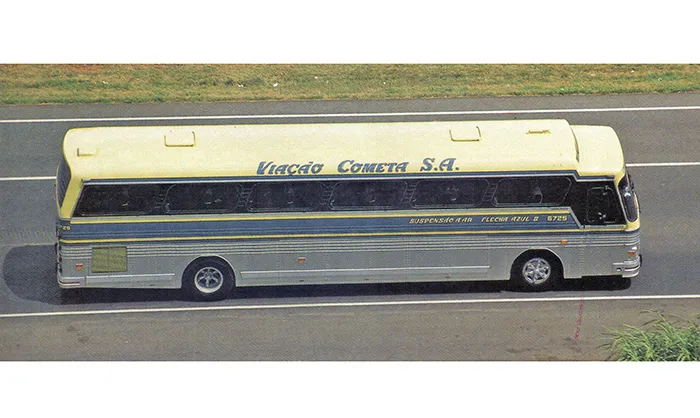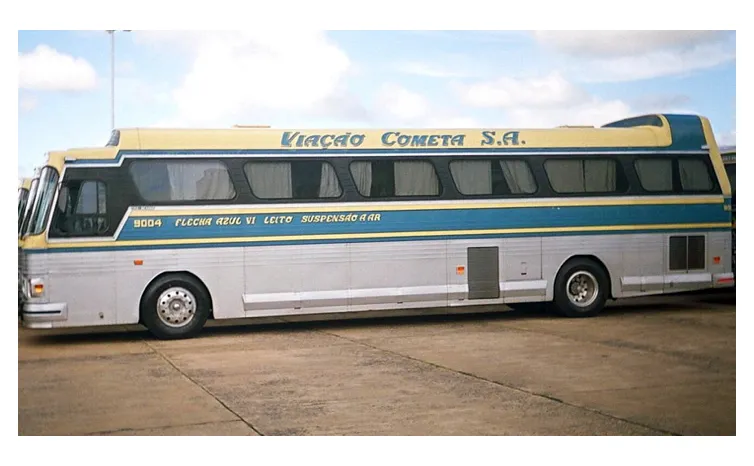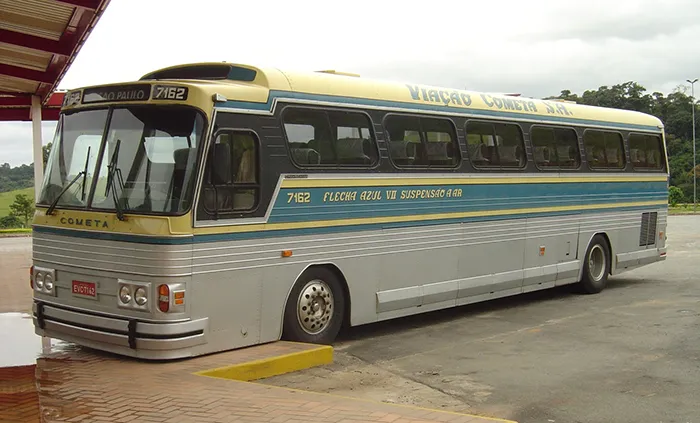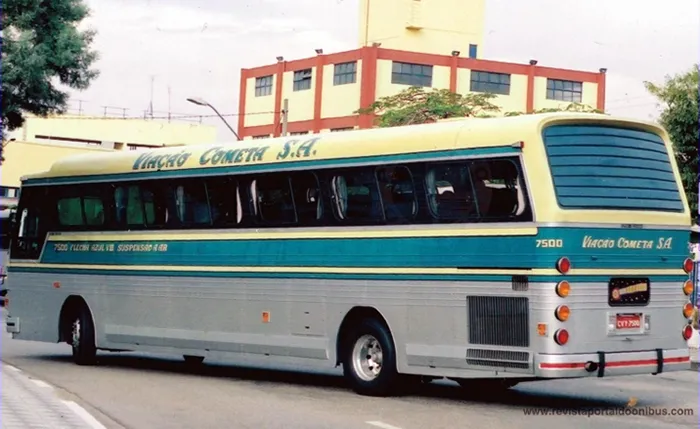If you are passionate about iconic vehicles, you have certainly heard of the Blue Arrow, one of the greatest symbols of Brazilian roads. This bus, which once belonged to the legendary Cometa Bus Company, is a historic milestone in road transport in Brazil. Even decades after its production, it continues to arouse the interest of collectors and admirers, thanks to its rich history and unique characteristics.
Let's dive into this fascinating journey, understand what makes the Blue Arrow so special and remember the moments that marked your existence. Get ready for a journey through time, full of nostalgia and curiosities.
The Origin of Myth: From Dinosaur to Blue Arrow
It all started in the 50s, when the Cometa Bus Company began operations with American buses GM PD-4104. These vehicles were known for their robustness and comfort, essential features for connecting large cities such as São Paulo and Rio de Janeiro. However, the change in Brazilian legislation, which encouraged national production, forced Cometa to look for alternatives manufactured in Brazil.
That's where the Dinosaur Ciferal, a model that, from 1972 onwards, began to dominate Brazilian roads. With an innovative design and chassis Scania, the Dinosaur served as the basis for what would become the Blue Arrow.
After the Ciferal break In the early 1980s, Cometa decided to take the reins of its bus production. Thus was born CMA – Auxiliary Manufacturing Company, which began manufacturing the Blue Arrow in 1983. This was the starting point for a legend that would span decades.
Unique Features That Made It An Icon
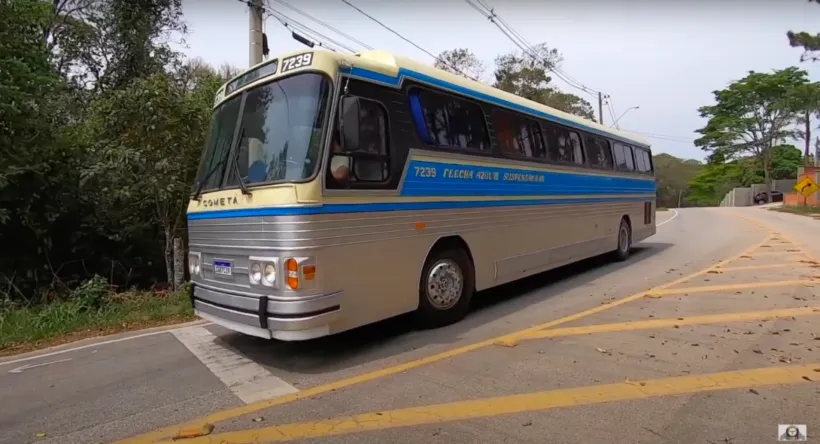
O Blue Arrow stood out not only for its name, but for the innovations it brought in relation to its predecessor. Its body was made of aluminum, which considerably reduced the weight of the vehicle. Combined with a powertrain Scania Highly powered, the Flecha Azul delivered impressive performance on the roads, surpassing any other bus of its time.
In 1984, the Automatic Blue Arrow, with transmission imported directly from Sweden. This model raised the level of technology in Brazilian road transport. In the following years, new versions continued to improve design and comfort, including:
- Scania K-112 (1987): With engine intercooler and a higher rear end, as well as redesigned taillights.
- Scania K-113 (1990): Introduction of leather seats, providing greater comfort to passengers.
- Scania K-124 IB (1998): A 360 hp engine, with even more power for long distances.
The technological peak came in 1999, with the latest model, which used the Scania Opticruise, an automated transmission that was a novelty for the time. This technological evolution consolidated the Flecha Azul as one of the most advanced vehicles of its generation.
The Legacy That Stands the Test of Time
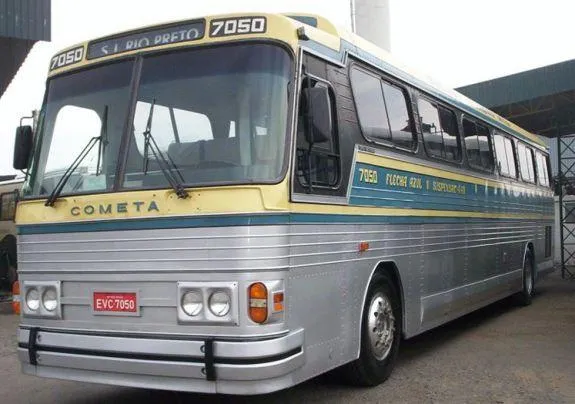
Although its production ended in 1999, the Blue Arrow remains alive in the hearts of many Brazilians. It is still possible to find some models in perfect condition, running in events or belonging to collectors who recognize the historical value of this bus.
In the collectors' market, the Blue Arrows well preserved can reach impressive values, exceeding R$ 500 thousand depending on the configuration and condition of the vehicle. This value is justified by the rarity and iconic status that the bus has achieved over the years.
Why is Flecha Azul Unforgettable?
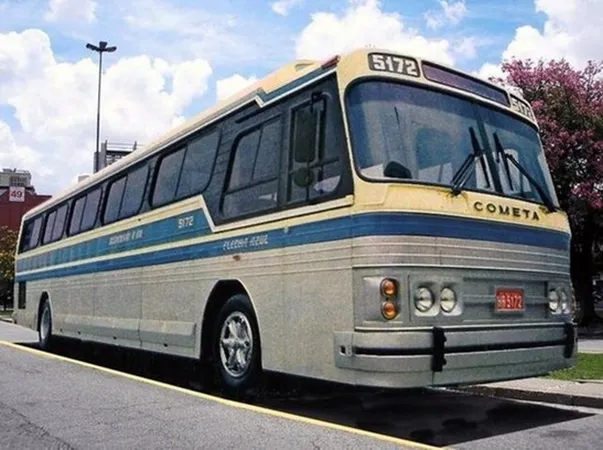
O Blue Arrow was not just a means of transportation; it symbolized a golden age for road travel in Brazil. At a time when air travel was still a luxury for the few, the Flecha Azul provided a premium experience for passengers.
Furthermore, its aerodynamic design, the shine of its aluminum bodywork and the characteristic roar of its Scania engine made it a striking presence on the roads. Many travelers have childhood memories associated with the Blue Arrow, making it a true time capsule.
Curiosities about the Blue Arrow
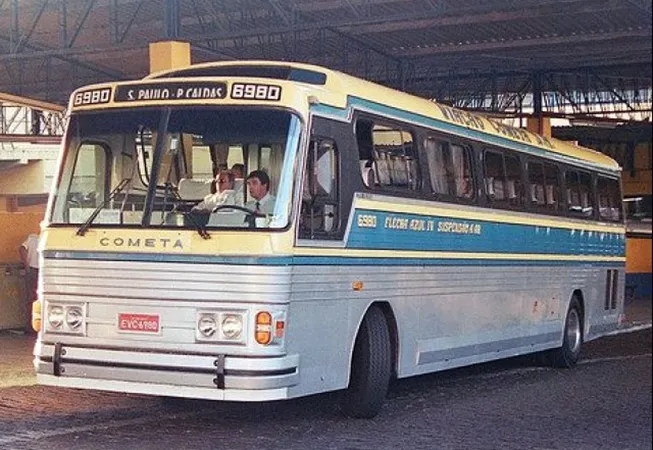
- Impressive Autonomy: Thanks to the large-capacity fuel tank and the efficiency of the Scania engine, the Flecha Azul was able to travel long distances without needing to refuel frequently.
- Limited Production: Throughout its history, only a few hundred units were manufactured, which makes it even more exclusive.
- Model 7501 – The Last of the Series: The last Blue Arrow produced, with prefix 7501, is considered a rare gem. It had an engine K-124 IB 420 and the revolutionary exchange rate Opticruise.
- Iconic Painting: The metallic blue paint with silver details has become a visual signature of Viação Cometa, being immediately recognizable on the roads.
Conclusion: A Symbol of Nostalgia and Innovation
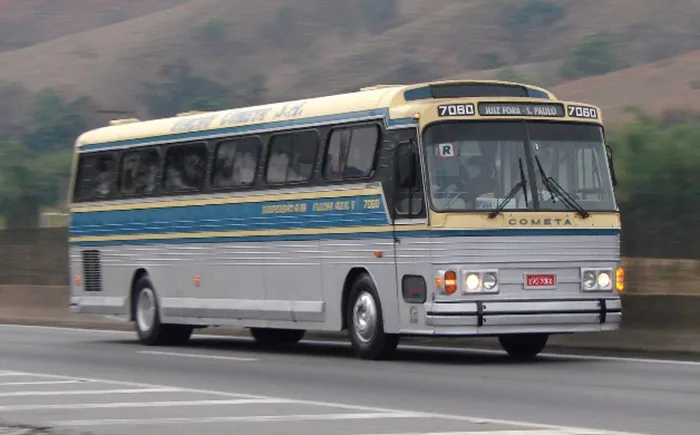
O Blue Arrow It is more than just a bus; it is a piece of Brazilian history, a testament to how road transport can be elegant, efficient and innovative. Even in 2025, its relevance remains intact, serving as inspiration for restoration projects and preservation of automotive history in Brazil.
If you are lucky enough to find one Blue Arrow at an exhibition or event, don't miss the opportunity to admire it up close. After all, it's not just a vehicle; it's a monument on wheels, which deserves to be celebrated and remembered by future generations.
